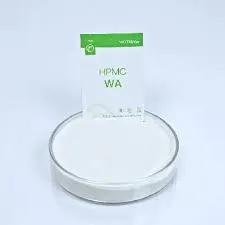
Nov . 07, 2024 11:57 Back to list
Exploring the Properties and Applications of Hydroxyethyl Cellulose in Various Industries
Understanding Hydroxyethyl Cellulose Properties, Applications, and Benefits
Hydroxyethyl cellulose (HEC) is a widely used cellulose derivative that has gained significant attention due to its unique properties and versatility. As a non-ionic, water-soluble polysaccharide, HEC finds its application in various fields, including pharmaceuticals, cosmetics, food, and construction. This article explores the characteristics, applications, and advantages of hydroxyethyl cellulose.
Chemical Structure and Properties
HEC is derived from cellulose through a reaction with ethylene oxide, which introduces hydroxyethyl groups into the cellulose backbone. This modification enhances its solubility in water, making it an excellent thickening and gelling agent. HEC is typically available in varying molecular weights, which dictates its viscosity in aqueous solutions. The degree of substitution (DS) of hydroxyethyl groups also influences its properties, affecting factors such as adhesion, film-forming ability, and compatibility with other substances.
HEC is characterized by its properties of non-toxicity, biocompatibility, and stability under various pH conditions. It exhibits thixotropic behavior, meaning it becomes less viscous when subjected to shear forces but recovers its viscosity once the shear is removed. These unique properties make HEC an ideal candidate for formulations where consistent texture and stability are essential.
Applications in Various Industries
1. Pharmaceuticals In the pharmaceutical industry, HEC is frequently employed as a thickening agent in gels and ointments. Moreover, its ability to form films and stabilize emulsions makes it suitable for drug delivery systems, particularly for sustained release formulations. HEC's non-irritating nature is crucial when developing topical medications.
2. Cosmetics and Personal Care Products The cosmetic industry relies heavily on HEC for its ability to improve the texture and application of skincare and cosmetic products. It is commonly used in lotions, creams, shampoos, and conditioners. HEC enhances the viscosity, provides a smooth feel during application, and helps improve the stability of emulsions, ensuring consistent product performance.
hec hydroxyethyl cellulose

3. Food Industry In the food sector, hydroxyethyl cellulose serves as a thickener, stabilizer, and emulsifier. It is often used in sauces, dressings, and soups to improve texture and prevent separation of ingredients. HEC is also utilized in gluten-free formulations, providing the necessary viscosity and mouthfeel that might be lacking due to the absence of gluten.
4. Construction HEC plays a significant role in the construction industry, especially in the formulation of cement-based materials. Its water-retention properties enhance the workability of mortar and concrete, ensuring that these materials maintain their consistency during application. Additionally, HEC contributes to the durability and strength of construction products.
Advantages of Hydroxyethyl Cellulose
The use of HEC in various formulations offers several advantages. Its ability to improve the rheological properties of products enhances user experience by providing better texture and ease of application. As a stabilizer, HEC helps prevent sedimentation and separation in liquid formulations, ensuring a smooth and consistent product.
Moreover, HEC is considered a sustainable choice, derived from natural cellulose sources. Its biodegradability and non-toxic nature contribute to its appeal in industries that prioritize environmental sustainability.
Conclusion
In summary, hydroxyethyl cellulose is a versatile and essential ingredient in multiple industries due to its unique properties and functionality. From pharmaceuticals to food and cosmetics, HEC enriches product formulations, enhancing their performance while ensuring safety and stability. As industries continue to innovate, the role of hydroxyethyl cellulose is likely to expand, furthering its application in developing sustainable and effective products for consumers. As a key ingredient, HEC exemplifies how derivatives of natural sources can provide innovative solutions across diverse sectors.
-
What is HPMC?
NewsJun.06,2025
-
Understanding Redispersible Powder: The Future of Construction Materials
NewsJun.06,2025
-
Understanding RDP Powder: The Ultimate Solution for Your Construction Needs
NewsJun.06,2025
-
Pure HPMC: The Ideal Solution for Modern Construction and Building Materials
NewsJun.06,2025
-
Methyl Hydroxyethyl Cellulose: A Versatile Chemical Compound
NewsJun.06,2025
-
Hydroxyethyl Cellulose Power: The Essential Chemical for Various Industries
NewsJun.06,2025







